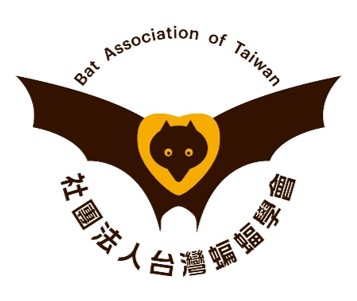蝙蝠研究
2009_台灣三種穴居型蝙蝠體溫調控模式、代謝率與水分散失速率之比較_張鈞傑
出版年份:2009
研究生:張鈞傑
分類:碩士論文
題目:台灣三種穴居型蝙蝠體溫調控模式、代謝率與水分散失速率之比較
Title:Thermoregulation, metabolic rate and evaporative water lossin three Taiwanese cave-dwelling bats
摘要:
溫度對於生物是一種強烈的選汰壓力,也是決定生物分布與豐富度的重要因子之一。過去研究顯示,熱帶地區蝙蝠的體溫調節模式,主要受到體型大小的影響。本研究目的在於比較台灣低海拔三種常見的的穴居蝙蝠,台灣小蹄鼻蝠(Rhinolophus monoceros)、摺翅蝠(Miniopterus schreibersii)與台灣葉鼻蝠(Hipposideros terasensis),其體溫調控、代謝率與水分蒸散率的差異,並釐清體型大小是否為影響其體溫調節模式的主要因子。研究結果發現:台灣的三種蝙蝠其體溫調控並不完全受體型影響,可能也與其起源地有關。體型大的台灣葉鼻蝠於低溫下(15-25 oC)不進行休眠,但仍會略為降低體溫以節省能量支出,與其他熱帶大型蝙蝠相似;摺翅蝠其體溫及代謝率皆隨環境溫度(10-30 oC)下降而降低,以進行休眠,與熱帶中型蝙蝠不同,卻與典型的溫帶蝙蝠相似;台灣小蹄鼻蝠體溫也是隨環境溫度下降而降低,但其代謝率於環境溫度低於20°C時,反而提高,但因體型小,散熱大於產熱,體溫仍不斷下降,顯示台灣小蹄鼻蝠為不適應低溫的熱帶種類。台灣葉鼻蝠的水分蒸散速率與代謝率無關,顯示其水分主要透過體表散失;摺翅蝠在休眠時的水分蒸散速率與代謝率呈正相關,顯示水分主要從呼吸道散失;而台灣小蹄鼻蝠的水分蒸散速率受代謝率與其他因子的共同影響。本研究也發現摺翅蝠在夏季與冬季的體溫調控模式很相似,與同種在溫帶及熱帶地區族群的代謝速率亦相似,顯示不同族群間體溫調節的模式應該差異不大。本研究僅探討單獨個體的體溫調控,至於群聚行為如何影響體溫調控,有待進一步研究。
Abstract:
Temperature is a strong selection force and determines the distribution and abundance of a species. In this study, I examined patterns of thermoregulation, metabolic rate, and evaporative water loss (EWL) in three Taiwanese cave-dwelling bats, the Formosan leaf-nosed bat, Hipposideros terasensis, the Japanese long-winged bat, Miniopterus schreibersii, and the Formosan lesser horseshoe bat, Rhinolophus monoceros, and test whether body size is the major factor for the patterns. The results showed that H. terasensis, the largest among the three, did not enter into torpor when temperature decreased (15-25 oC), but maintained a slightly lower body temperature to reduce energy expenditure. M. schreibersii depressed its body temperature and metabolic rate as temperature dropped from 35 to 10 oC. The pattern is different from those of medium-sized tropical species but similar to those of temperate bats. R. monoceros, smallest among the three, also dropped their body temperature and metabolic rate when ambient temperature went down to 20 oC. Below 20 oC, metabolic rate of R. monoceros increased, suggesting R. monoceros could not tolerate low temperature and might have a tropical origin. Nevertheless, body temperature of R. monoceros didn’t increased as the metabolic rate elevated, likely due to it’s small body size. The rate of evaporative water loss did not related to metabolic rate or temperature in H. terasensis, suggesting the pathway for water loss was cutaneous rather than respiratory. The rate of EWL in M. schreibersii is positively correlated with the metablic rate, suggesting water was lost mainly through respiratory tracts. Factors other than respiration might also influence the EWL of R. monoceros. Our results suggest that body size may not be the sole factor affecting thermoregulation in the Taiwanese bats. Other factors, such as phylogeny, may also influence thermoregulation. While this study focuses on thermoregulation of individual bats, the effect of clustering on thermoregulation might be included in future studies.
